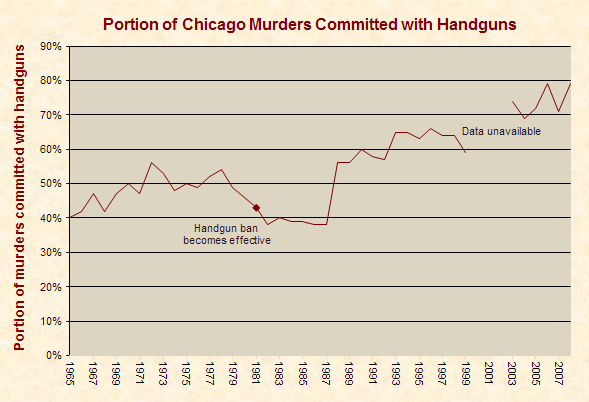1. States with more gun control laws have lower levels of firearm homicide and firearm suicide.
You know what's bad? When I looked up that study, Google looked back at me and only spat out 4 links. Where it's hosted on Harvard, two links in a discussion on HockeysFuture, some "Spokesman" site, and this very thread. However, revising the search with just the title and the publication, I was able to
find it on Harvard's site anyway. It seems they don't have consistent citations.
Anyways, phew, took a look at this, looked into other stuff about this, and this is what I have to say.
The corrected statement should be "States with more gun control laws have lower levels of combined firearm homicide and firearm suicide." I took the liberty of dissecting their data and separating it into Legislative Score vs. Homicides and Legislative Score vs. Suicides and put it into a
Google Doc. I couldn't figure out how to do trendlines on the Google Doc, so I have charts from the Google spreadsheet and also from Excel and the Excel ones have both the trendlines and their corresponding R² values. I include the ones from the Google Doc just to show that I'm not messing up the data anywhere. Don't bother with the order of "x vs. y" titles, I know they're different but now that I've done it I'm too lazy to go back, screencap, cut, paste, etc. to fix it.
As you can see for the homicide rates, there's just way too much variation there. There is definitely a slope, but its so small that it's really not that meaningful.
According to this site on R² values, I'm pretty sure that means that you can't draw any useful conclusions.
The suicide rates one, though? Even I was surprised at this. Looks like you might have something there. The R² value even agrees. However, my entire argument against gun control isn't about protecting people from themselves, its about protecting people from bad people, so I'm only going to look at the homicide rates. I just value the life of someone who isn't determined to kill themselves as being more valuable than the life of someone who is determined to kill themselves. I believe that there are other social precautions that can be enacted that don't involve gun control to fix that problem anyway.
Anyway, some more stuff on that:




2. “Shall issue” laws have no significant effect on the overall homicide rate
Pretty sure this talks about right-to-carry laws, and I'd have to say that they may well be right. Without looking at their study, I'll just post some data I've got from
JustFacts.



Seems pretty correct to me. It looks like each state just follows the national average with a bit of variance. However, I'm not sure that anyone can conclude that they don't do anything, just that we don't have any data to conclude anything about them. They might be of more benefit or less benefit, or maybe they do nothing, we just don't know yet due what seems like other factors.
3. Child access prevention laws may reduce unintentional child firearm fatalities
Sure, sounds good. This is the kind of stuff I'd like more of, if I understand it correctly. I'm cool with this.
4. Some gun policy evaluations are designed to ensure that no effect will be found.
This article on statistics describes the limitations of studies that claim no effect of gun shows, and no effect of the Australian gun buyback.
Gun shows are something I could see myself liking more regulation of. As for the effect of the Australian gun buyback, there's just so much back and forth crap on that that you're going to be hard pressed to find anything useful for either side. Although, I will say that this is still by Hemenway. I don't think he or Azrael can be considered unbaised on this issue which generally hurts their credibility. That doesn't nullify their credibility (although I've already nullified some of their findings anyway), that just hurts it.
5. Results of a flawed study results should not affect policy
This mentions more stuff about gun shows, so see above.
6. The Brady Bill has major limitations in scope, monitoring and enforcement
One section of this chapter discusses the three aspects of regulation: the rules, monitoring of those rules, and punishments if the rules are not complied with. The Brady bill is discussed as an example of a law with major deficiencies in all three aspects.
In point 1, they base their entire case on the whole Brady regulations thing and judging laws and all that, and here they say that it's full of holes. Granted that's the Brady Center in point 1, but that is still definitely involved with the Brady Bill. Anyway, I don't care enough about this to look it up either. I'm fine with better regulation, I just don't want regulation that shows more evidence that it does more harm than good.

 Poll
Poll
 Author
Topic: Bay12 Election Night Watch Party (Read 837788 times)
Author
Topic: Bay12 Election Night Watch Party (Read 837788 times)


